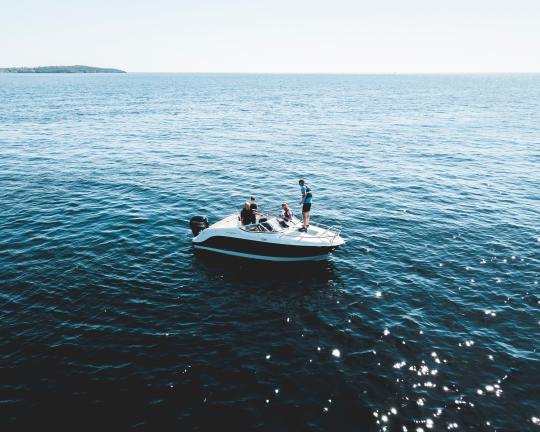Text
0 notes
Text
0 notes
Text
Autonomous Vehicle Working Group Report for Washington DC

Based in Washington DC, Xavier Beltran serves as general counsel to the District of Columbia’s Department of General Services. Among Xavier Beltran’s responsibilities is serving on the Autonomous Vehicles Working Group. Established by a Mayor's Order in 2018, the working group emphasizes peer-to-peer learning that involves local and national stakeholders in areas such as driverless autonomous vehicle (AV) sustainability, accessibility, and safe mobility.
In November, 2021, the Working Group issued a report that recommended support of Vision Zero goals. This means implementing AV speed limitations and street design principles that ensured the safety of the most vulnerable roadway users. Shared-use AVs should be utilized in much the same way that carsharing and informal carpooling, as well as public transit, already operate.
Another area of focus is "person throughput” and using vehicle lanes in ways that prioritize modes that deliver maximum passengers per lane-mile. A major concern here is that AVs may place pressure on travel lanes and could impact healthy, eco-friendly transportation modes such as cycling and walking. Planning should also help ensure that autonomous vehicles provide access to public transportation in a way that complements existing services, instead of supplanting them. Other areas of research focus include the distinct ways in which AVs will make use of curbside lanes and parking facilities across the metro DC area.
0 notes
Text
An Overview of Boating - History, Benefits, and Activities

Boating is a recreational activity with a rich history. Wooden boats were historically used for transporting goods across water bodies. Archeologists trace the earliest evidence of boating to ancient Egypt between 4000 and 3000 BC. Here, vessels made from tree dugouts were useful in conducting commerce between Mesopotamia and Indus Valley civilization. The bound-reed style, hide-covered kayaks, and birch bark canoes were the common boat types until the 19th century.
The advances in hand tools in the mid-19th century enabled boat builders to make boats from wood, iron, and steel frames. These structural changes advanced the use of boats, from fishing and transportation resources to recreational purposes. Boating was popular with wealthy families, and later in 1903, motorboats were introduced for sport.
A further innovation was seen in the mid-1960s when fiberglass was introduced as an alternative to wood and steel to mitigate wood rot and rust. By this time, there were over 450,000 registered boats, and boating was considered a top family sport in the US. The American boating industry was developing impressively, but the economic turmoil of the 1990s and early 2000s inflated fuel prices and discouraged purchases.
In 2005 there were over 12 million registered boats, and the industry was recovering impressively. This was evident over the next decade when the US boating industry recorded participation rates exceeding 100 million in 2016, about 36 percent of the country’s households.
By 2021, this industry was valued at $27 billion, and experts claim it will reach over $36 billion by 2027. This is despite the COVID-19 complications that disrupted supply chains, hindering manufacturers’ efforts to deliver vessels to the market. Regardless, boat builders sold more than 300,000 units for only the second time since 2005. Boating was one of the few family activities unaffected by social distancing and lockdowns.
The number of enthusiasts is rising, averaging over 120 million annually. The US boating industry creates more than 690,000 jobs and supports over 35,000 businesses, most of which operate in the leisure and tourism sectors. Notably, American outdoor recreation contributes about $700 billion to the country’s gross domestic product (GDP), and recreational boating accounts for $31 billion.
Boating also has health and social benefits. Since it is an outdoor activity, boating exposes participants to sunlight which is essential for their bone health. Sunlight spurs the body to produce vitamin D, and frequent exposure promotes calcium absorption, improving bone density and strength. Sunlight also stimulates endorphin production, which helps to improve mood.
Moreover, this activity builds muscle and burns calories. Boating engages the muscles, mainly if it relies on rowing or paddling to propel the vessel. Frequent boating can improve muscle strength and flexibility and help weight management for those who dislike intensive physical workouts.
Besides, boating helps to create meaningful relationships. Enthusiasts can meet people with similar interests in resorts and develop friendships. These relationships can be maintained outside boating areas to enhance social support and professional networking.
Being at sea is also stress relieving since it triggers a state of mind that results in calmness. Vacation lovers often hire boats and sail out to detach from the stresses and anxieties of everyday life. Experts claim that connecting with nature promotes the generation of serotonin, the chemical responsible for happiness and wellness.
Boaters engage in several activities. One is water skiing which involves attaching a rope to the vessel and standing on skis to move across the water surface as the boat drives. Two, participants can fish for domestic consumption after obtaining fishing permits.
Additionally, boaters can engage in scuba diving to explore the ocean’s depth while inhaling compressed oxygen. Last, enthusiasts can participate in towable tubing as the vessel drives across the water. This activity utilizes inflated tubes attached to the vessel using a rope. As the boat moves, boaters hold on to the tube and enjoy being glided on the water.
1 note
·
View note